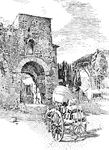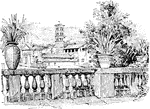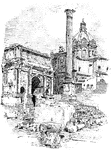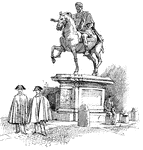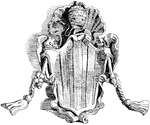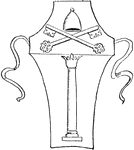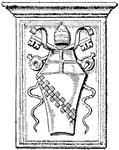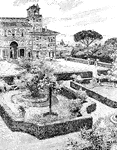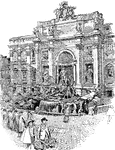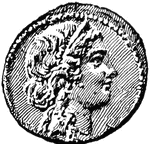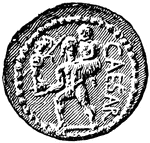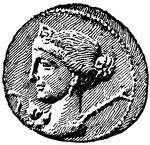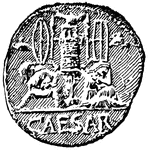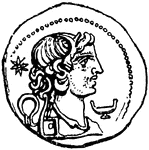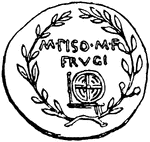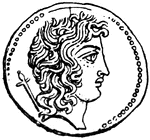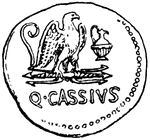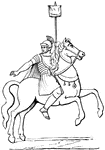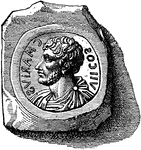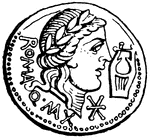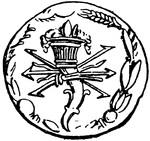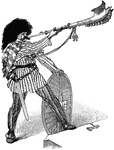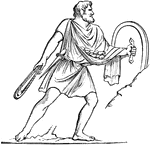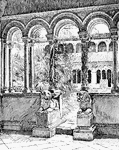
Cloister of the Lateran
"The Benedictine system enjoined three virtues as essential; solitude, humility, and obedience." —…
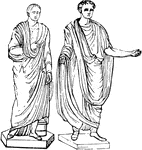
Roman Togas
"The following cuts represent, the first more ancient, and the second the later mode of wearing the…
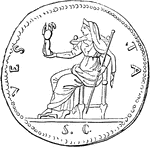
Coin of Vesta
"Represents Vesta seated on a throne, with the Palladium of Rome in her hand." — Anthon, 1891

Temple of Jupiter
"The door in front of a temple, as it reeached nearly to the ceiling allowed the worshippers to view…
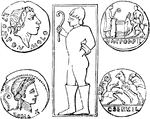
Sculpture and coins
"The figure in the middle of the following illustration is from a most ancient specimen of Etruscan…

Roman hinges
"The Greeks and Romans used hinges exactly like those now in common use. The following cut exhibits…

Statue of Phocion
"A more graceful mode of wearing the palla was to attach it by means of a brooch, and allow…

Banqueting room
"The Roman people reclined at their meals. On each couch there were commonly three persons. They lay…
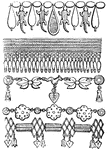
Monilia
"A necklace. Necklaces were worn by both sexes among the most polished of those nations which the Greeks…

Ocrea
"A greave, a leggin. A pair of greaves was one of the six articles of armour which formed the complete…

Ocrea
"A greave, a leggin. A pair of greaves was one of the six articles of armour which formed the complete…
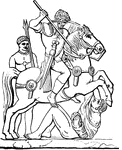
Cavalryman Charging
Charging cavalryman pictured trampling an enemy soldier and holding a spear in the Gallic War.
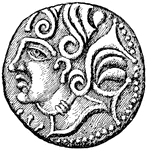
Coin of Diviciacus
The Coin of the King of the Suessiones, Diviciacus, with bust on front and prancing horse on back. Front.
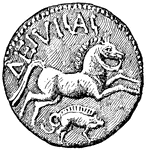
Coin of Diviciacus
The Coin of the King of the Suessiones, Diviciacus, with bust on front and prancing horse on back. Back.

Vinea
A Vinea, or Testudo, a small structure framed with wood used to protect soldiers attacking city walls.
